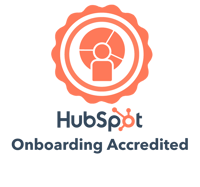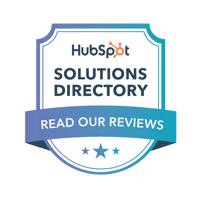Our Process - BizzyWeb - Minneapolis
We work with you to strategically grow your business through user-based web design and digital marketing.
Some surprises are fun – but when it comes to money, we don’t like surprises. You probably don’t either, which is why we like to be upfront about what to expect when you work with BizzyWeb. On this page is a breakdown of the different types of services we offer and what each service includes.

Strategic Gameplan
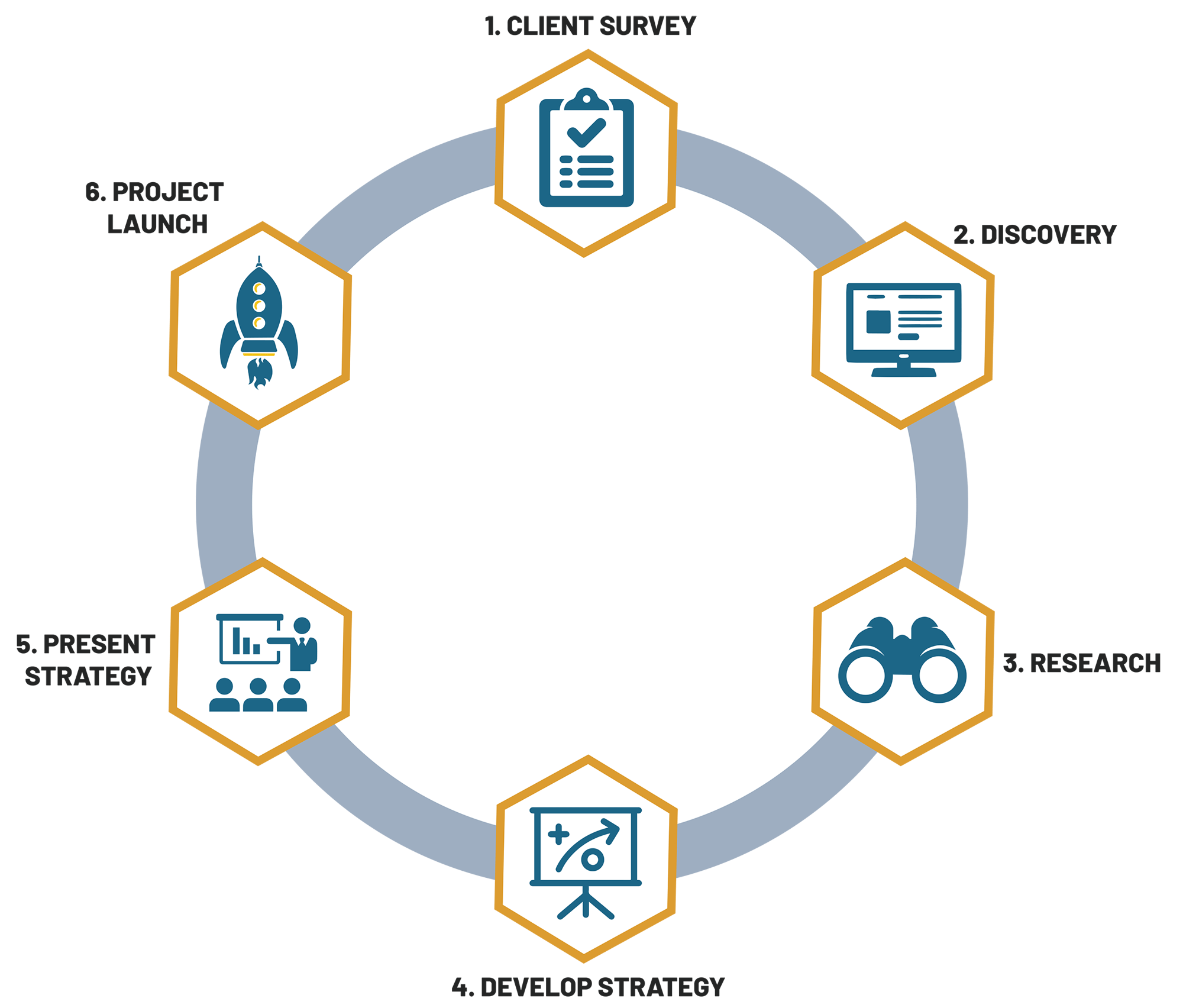
BizzyWeb’s process starts with strategy, and then moves through our design and marketing recommendations to ensure you connect with your audiences and deliver the information they need.
Step 1:
Client Survey
Your first step will be to fill out a survey online. This allows us to get a high-level view of your goals, current marketing efforts and competitors.
Step 2:
Discovery
Once you’ve completed the survey, we’ll schedule a meeting to discuss your answers and do some initial brainstorming. During this meeting, you’ll meet our team and we’ll get to know your business a bit better.
Step 3:
Research
Armed with the information from the client survey and discovery meeting, our team will begin research. We’ll take a look at your goals and how best to achieve them through digital marketing and/or web design.
Step 4:
Develop Strategy
Our team will create a document with our findings to present to you. The strategic gameplan document will vary slightly, depending on your goals and what solutions we’ve found. Generally this includes User-Experience Strategy, Content Audit, SEO Audit, and Social Media Strategy.
Step 5:
Present Strategy
Once we have your document ready, we’ll send it off to you and schedule a strategy meeting. During this meeting, we’ll go through the strategy. You’ll be able to ask our team questions to further develop your strategy.
Step 6:
Project Launch
From here, the planning stage of your strategy is done. You can take it with you to implement yourself, or we can implement the strategy for you.

Let's Get Started
Growth-Driven Web Design
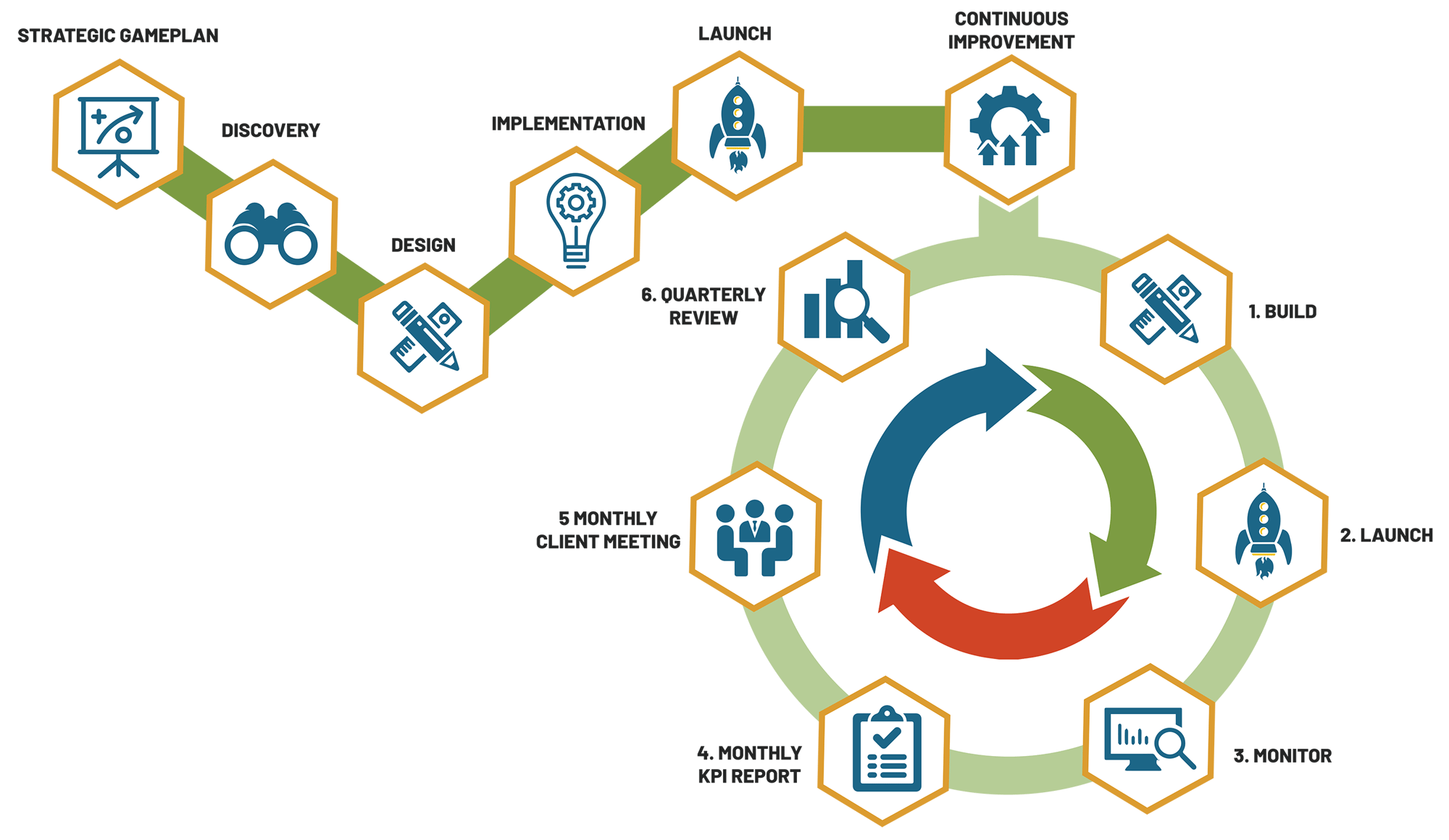
With Growth-Driven Design (GDD), your website is never left stagnant. Instead of a “set it and forget it” approach, GDD actively targets your users’ pain points to solve them and create a streamlined, modern website experience. In traditional web design, user experience is an important element but not the primary goal of a redesign. GDD is a new approach based entirely on user experience and hard data.
Because this is a more fluid process, there are a few steps that build into the preparation, but then it becomes a continuous flywheel that repeats steps and spins endlessly.
Phase One: Preparation
Step 1:
Strategic Gameplan
Your Growth-Driven Web Design project will be based off the Strategic Gameplan described above that defines your goals, existing website and buyer personas. In this document you’ll find user experience research and recommendations from our team.
Step 2:
Discovery
During discovery, our two teams will meet to discuss your project and timelines, priorities, and get feedback from each other. This will be a brainstorming session where we take what we’ve learned in the strategy, and compile a list of items that need attention.
We will, collectively, determine the 20% of items that will make 80% of the impact, and those items will guide your launch pad website build.
Step 3:
Design
Once you’ve given us the go-ahead, our team will get to work creating a functional launch pad website for your GDD project. You’ll be given a sitemap to review pages, wireframes to sign off on look-and-feel and finally an interactive but hidden mock-up of your site you can dig into. At each step, you’ll be asked for your feedback and approval.
Step 4:
Implementation
When you’ve decided on a design, our team will begin the implementation step: actually building the site. We’ll source content either from your existing website or that we’ve written as part of your program and plug it into your design.
Step 5:
Launch
our launch pad website is released to the world, functional, but ready to be expanded and improved.
Then we set up qualitative and quantitative data collection on your website to get data from users around reaching your company’s goals, make sure the fundamental assumptions about your users are correct, and test marketing hypotheses.
Step 6:
Continuous Improvement
This is the core of Growth-Driven Web Design. Your site is continuously expanded and added to, creating a flywheel that’s constantly in motion.
Phase Two: Continuous Improvement
Step 1:
Build
First, we prioritize and plan the steps for each action. Then we build each incremental change into the site.
Step 2:
Launch
We make each change live. Both steps 1 and 2 happen during 2-week periods called sprint cycles.
Step 3:
Monitor
Once the change(s) are live, we monitor them to see how users on the site respond. This stage is the most important in the Growth-Driven Design process.
Step 4:
Monthly Report
We put our findings into a monthly report, in which we analyze the data, track progress towards annual goals, and recommend next steps.
Step 5:
Monthly Client Meeting
We meet with you to discuss our findings and recommendations, as well as discuss upcoming action items.
Step 6:
Quarterly Review
Each quarter, we host a brainstorming session. During this session, both of our teams lay out ideas, that are then broken down into actionable steps. And this takes us back to Step 1: Build.
See How it Works
Our Free eBook “An Introduction to Growth-Driven Web Design” is an in-depth dive into GDD.
Web Design
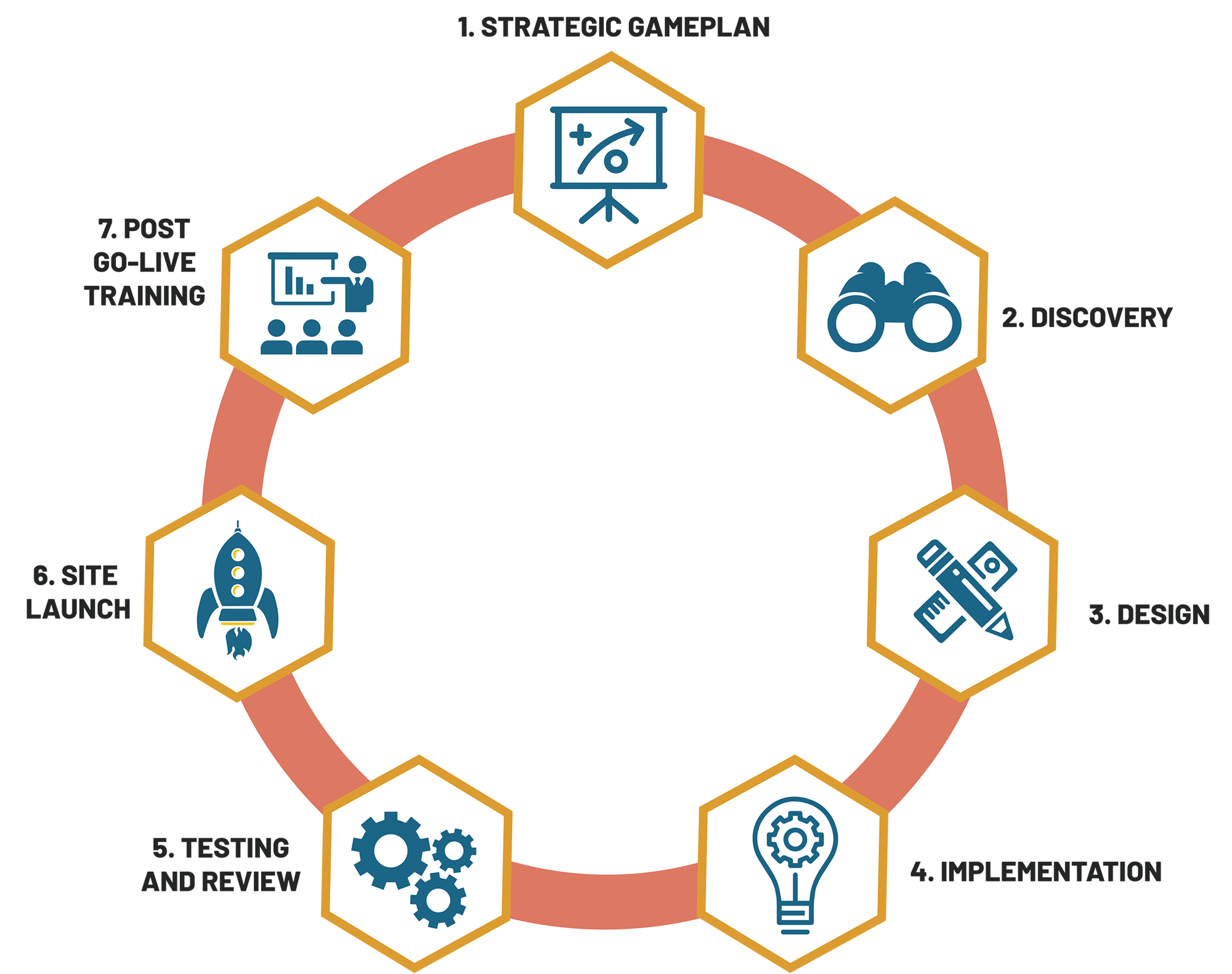
Your website can be your best tool for converting leads into customers. Your site should be an interactive sales tool, not a brochure. It should show visitors that you clearly understand their needs, give them enough information to make a decision and get them to the next step in your sales process. Is your current website about you, or is it for your customers? We collaborate with you to understand your business, the psychology of your customers and your goals and competition. It needs to look fantastic on both mobile devices and PCs and should help you show up on Google when your best prospects are searching. Our Minneapolis web design programs build you a site that generates buzz and drives real results.
Step 1:
Strategic Gameplan
Our team will perform a complete website audit and strategy. The results will tell us how your prospects, leads and customers are interacting with you digitally. This will arm us with the information we need to develop a comprehensive program that will engage your audiences, and allow room for growth in the future as technology evolves. This document is yours to keep for future reference.
Step 2:
Discovery
We get to know you. We’ll have a conversation about your business, your goals, your current website and where you want to go. This is a more informal meeting for our teams to get to know each other and so we can start planning.
Step 3:
Design
This is the meat and potatoes of your web design. It begins with a sitemap and wireframes: blueprints for the layout of your site. Once you’re satisfied with the blueprint, we present a design. This is a Collaboractive process for both our teams – we want to make sure we create a website you’re proud of that’s also built for user experience and conversions.
Step 4:
Implementation
Once you give the green light on a design, we move into implementation. This is when your website is actually built.
Step 5:
Testing & Review
Before we unveil your site to the world, we’ll create a usable playground where we can test and review your site like it’s live. Our team thoroughly combs through the whole site to make sure it’s working as it should, but you’ll also be given access to give it a final once-over.
Step 6:
Site Launch
It’s ALIVE! We launch your site to the world. During the following days, we’ll monitor your website closely to ensure it’s working properly.
Step 7:
Post Go-Live Training
It’s important to us that you know how to use your own website – we’re happy to help out, but we also don’t want you to have to come to us for every update. After your site is live, we’ll set up a training session to show you how to use the website and also give you video tutorials you can reference at any time.

Make your website as essential tool with Growth-Driven Web Design
Inbound Marketing
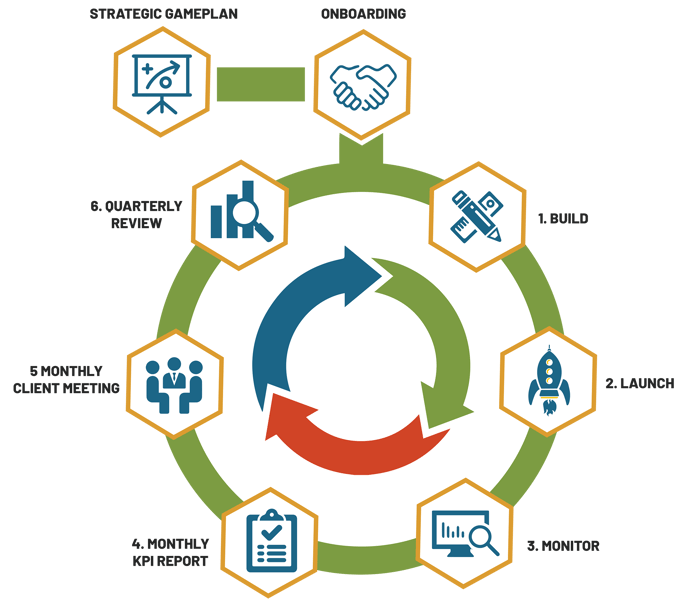
Inbound marketing is customer-oriented and customer-driven. Simply put, inbound marketing starts with valuable content that your target audience wants, instead of just advertising your services. In a traditional marketing model, you would simply “spread the word” about your business through print or online ads. With inbound marketing, you instead focus on providing valuable information or items your customers can use. For example, you might start with an ebook, a quiz, a checklist or a blog that your ideal customer might find useful. You dangle that content offer to get nibbles in exchange for a form fill or phone call, and then follow-up with more direct advertising. Inbound Marketing includes two phases.
Phase One: Preparation
Step 1:
Strategic Gameplan
Our team will perform a complete marketing audit and strategy. The results will tell us how your prospects, leads and customers are interacting with you digitally. This will arm us with the information we need to develop a comprehensive program that will engage your audiences, and allow room for growth in the future as technology evolves. This document is yours to keep for future reference.
Step 2:
Onboarding
This is where a lot of heavy lifting happens. We’ll create a HubSpot account for you, get everything set up, import your contacts, create workflows and set up sequences. During this stage, we’ll likely be in frequent contact with you to ensure that everything is created the way it should be.
Phase Two: Inbound Marketing
Step 1:
Build
This is the phase where we create all of your marketing assets: inbound materials, landing pages, social media pages and posts, pay-per-click advertising, search engine optimization/keyword lists, blogs, etc.
Step 2:
Launch
Your inbound marketing campaign is made live and we begin all online advertising and content marketing efforts. Promotion is key to a successful campaign, so we will focus advertising, social media posts and email marketing around each campaign.
Step 3:
Monitor
We monitor and analyze how your campaign(s) perform and where/how your audience engages with you.
Step 4:
Monthly KPI Report
We compile our findings into a report.
Step 5:
Monthly Client Meeting
We meet with you to discuss your report, our findings, and where we can improve. Quarterly trends and annual benchmarks keep us on track to meeting your goals.
Step 6:
Quarterly Review
Each quarter, we host a brainstorming session. During this session, both of our teams lay out ideas to create new inbound campaigns. This brings us back to Step 1: Build.

Digital Marketing
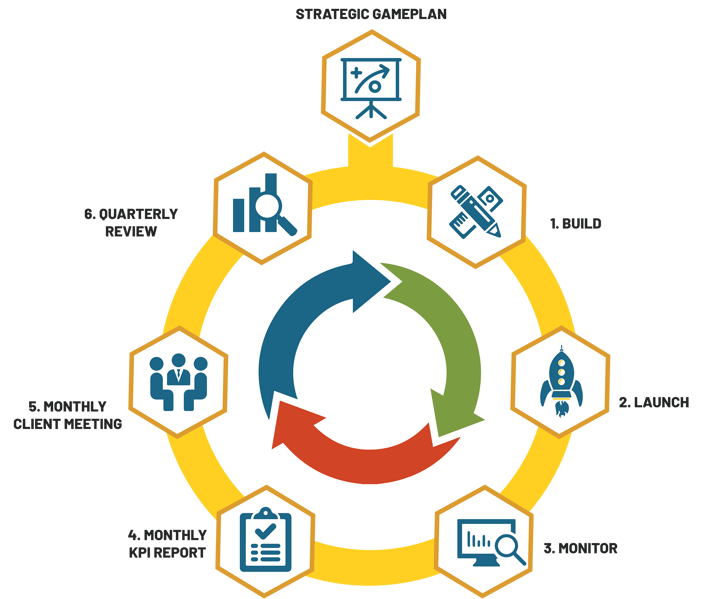
Having a great website is only half the battle: You need to drive traffic and interest to your business, deepen customer relationships, generate new leads and enhance your search rankings so you show up when your customers are ready to buy. Digital marketing is the engine that drives traffic to your website. BizzyWeb’s digital marketing programs include fully-integrated solutions for content marketing, search engine optimization (SEO), pay per click advertising, social media marketing, email marketing and inbound marketing.
Preparation: Strategic Gameplan
Step One:
Build
During the build stage, we create the monthly marketing assets that will be used in your program. This includes blog posts, social media posts, marketing emails, online advertisements and landing pages.
Step Two:
Launch
During the month, your online assets are launched on their respective marketing channels. Blogs and social media posts begin, online advertising launches and email marketing starts flowing.
Step Three:
Monitor
We monitor and analyze how your marketing efforts perform and where/how your audience engages with you.
Step Four:
Monthly KPI Report
We put our findings into a monthly report, in which we analyze the data, track progress towards annual goals, and recommend next steps.
Step 5:
Monthly Client Meeting
We meet with you to discuss your report, our findings, and where we can improve to help you reach you company goals.
Step 6:
Quarterly Review
Each quarter, we review results against benchmarks, discuss trends in your program activity, as well as do a check-in on your top competitors’ activities. During this meeting, both of our teams lay out ideas to create new marketing efforts. This brings us back to step 1: build.
How's Your Digital Marketing Strategy?
This digital marketing guide will help you plan your strategy.


